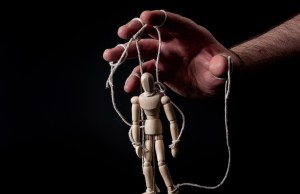Understanding and navigating relationship dynamics is a complex and ever-evolving journey. Relationships, whether they are romantic, familial, or platonic, form the cornerstone of our lives—and can bring profound joy and fulfillment, but they also come with their unique challenges and complexities.
In this article, you’ll explore the fundamental principles that underpin relationships and gain valuable insights on how to navigate their intricacies. Whether you’re seeking to improve your romantic partnership, strengthen family bonds, or enhance your social interactions, understanding the dynamics at play is the first step toward building healthier and more rewarding relationships.
And if you’re looking for a professional’s help, don’t hesitate to schedule a session for you and your loved one(s) today.

What Are Relationship Dynamics?
Relationship dynamics are complex and ever-changing patterns of interactions and behaviors between individuals in any kind of relationship, be it romantic, familial, platonic, or professional. These dynamics are crucial in shaping the overall health and quality of the relationship.
Several key relationship dynamics include:
- Communication: Effective communication is fundamental in any relationship. It involves not just talking but also listening actively and empathetically. Poor communication can lead to misunderstandings and conflicts.
- Trust: Trust is the foundation of strong relationships. It involves believing in the reliability and integrity of the other person. Trust can be built or eroded over time based on actions and words.
- Boundaries: Establishing and respecting personal boundaries is essential. Healthy relationships involve clear boundaries that define each person’s comfort zones and limits.
- Conflict resolution: Conflicts are inevitable, but how they are managed is critical. Healthy relationships require constructive approaches to resolving disagreements rather than destructive patterns like avoidance or hostility.
- Power and equality: Power imbalances can strain relationships. It’s important that individuals within a relationship feel valued and have equal say in decision-making.
- Emotional intimacy: Emotional connection and intimacy involve sharing feelings, thoughts, and vulnerabilities. Developing emotional closeness fosters deeper connections.
- Time and effort: Maintaining relationships requires time and effort. Neglecting a relationship can lead to its deterioration.
- Compatibility and shared values: Shared values and interests can strengthen relationships, while significant differences can create challenges.
- External influences: External factors, such as family, friends, gender roles, and societal norms, can impact relationship dynamics and may need to be navigated.
- Adaptability: Healthy relationships evolve over time as individuals and circumstances change. Being adaptable and willing to grow together is essential for long-term success.
Understanding and navigating these relationship dynamics is key to building and sustaining healthy, fulfilling connections with others. It often requires open communication, empathy, and a willingness to work together to overcome challenges and nurture the relationship’s growth.
What Are the Different Types of Relationship Dynamics?
There are many different types of relationship dynamics, but here are some common ones that revolve around the nature of the relationship itself:
- Romantic dynamics: These dynamics typically involve emotional intimacy, affection, and often a sexual component. Romantic relationships can range from casual dating to long-term partnerships and marriages.
- Platonic dynamics: Friendships are characterized by mutual trust, shared interests, and emotional support. Friends may have different levels of closeness and intimacy in their relationships.
- Familial dynamics: These dynamics are based on blood or legal ties and can include relationships between parents and children, siblings, and extended family members. Family relationships are often characterized by a deep sense of connection and obligation.
- Professional dynamics: Professional dynamics are typically based on shared work or business interests. They may include relationships with colleagues, supervisors, employees, or business partners and can be healthy or toxic.
- Casual dynamics: Casual dynamics are typically less committed and may involve minimal emotional investment. They can include casual dating, hookups, or friendships with less emotional intimacy.
- Toxic dynamics: These dynamics are unhealthy and can be emotionally or physically abusive. Toxic relationships can occur in any context, including romantic, sexual, financial, familial, or friendships.
- Codependent dynamics: Codependent dynamics involve one person relying heavily on another for emotional support or self-esteem. These relationships can be unhealthy and can inhibit personal growth.
- Long-distance dynamics: Long-distance dynamics involve partners who live far apart and must maintain their relationship primarily through communication and occasional visits.
- Open or polyamorous dynamics: These dynamics involve consensually non-monogamous arrangements where individuals have multiple romantic or sexual partners. Communication and trust are crucial in such relationships.
- Mentorship or teacher-student dynamics: These dynamics involve one person guiding and teaching another, typically in a professional or educational context.
- Online dynamics: Online dynamics occur in the digital realm, such as friendships or romantic relationships formed through social media, online gaming, or dating apps.
- Parent-child dynamics: These dynamics vary throughout a child’s development, from caregiver-infant bonding to parent-adolescent relationships.
It’s important to note that these relationship dynamics are not mutually exclusive, and individuals can experience a combination of them in their lives. Additionally, the health and quality of a relationship can vary widely within each type of dynamic.
Effective communication, mutual respect, and shared values are often key factors in maintaining healthy and fulfilling relationships.
Hello, we're here to help you
We provide award-winning mental health services nationwide, with flexible scheduling & insurance coverage. Start your journey this week.
What Is the Ideal Dynamic of a Relationship?
The ideal dynamic of a relationship is characterized by:
- Mutual respect
- Open communication
- Trust
- A strong emotional connection
Ultimately, an ideal relationship is a partnership where both individuals feel loved, respected, and valued, fostering a sense of happiness and fulfillment. It’s important to note that this ideal dynamic may evolve and adapt over time to accommodate the changing needs and circumstances of both partners.
The Basics of Relationship Dynamics
Relationship dynamics refer to the complex interplay of emotions, behaviors, and communication patterns that govern how individuals relate to one another. At their core, relationships are built on a foundation of trust, mutual respect, and shared values.
Trust forms the bedrock, as it allows individuals to feel safe and secure in their interactions. Without trust, relationships often falter.
- Communication is a fundamental element of relationship dynamics. Effective communication involves active listening, open and honest expression of thoughts and feelings, and the ability to resolve conflicts constructively. Miscommunication or poor communication skills can lead to misunderstandings and conflicts within relationships.
- Power dynamics in relationships also play a significant role. Every relationship has a unique balance of power, which can shift over time. Equality and a sense of fairness are essential in maintaining healthy relationship dynamics. When one person consistently wields more power or control, it can lead to resentment and imbalance.
- Emotions are a driving force in relationship dynamics. Understanding and managing emotions like love, jealousy, anger or anxiety, and empathy is crucial. Emotional intelligence enables individuals to navigate the ups and downs of relationships with empathy and self-awareness.
- Boundaries are essential for defining the limits of a relationship. Setting and respecting boundaries ensures that both individuals’ needs and comfort levels are considered and maintained.
Ultimately, the dynamics of any relationship are influenced by the unique personalities, histories, and circumstances of the individuals involved. Successful relationships require ongoing effort, communication, and a willingness to adapt to changing dynamics over time. By fostering trust, effective communication, equitable power dynamics, emotional intelligence, and clear boundaries, individuals can nurture healthy and fulfilling relationships.
Common Challenges in Relationship Dynamics
Common challenges in relationship dynamics can arise as a result of:
- Trust issues. Past betrayals or insecurities can make it difficult to establish and maintain trust in a relationship. These issues may lead to jealousy, suspicion, and a lack of intimacy. Alongside trust, boundaries play a significant role. Failing to respect each other’s boundaries can lead to feelings of suffocation or disrespect, causing friction in the relationship.
- Unresolved conflict can fester and lead to resentment. Additionally, external stressors, such as work pressures, financial problems, or health issues, can spill over into relationships, affecting their dynamics.
- Emotional incompatibility and differing values can also be sources of tension. When partners or friends have fundamentally different emotional needs or hold conflicting values, it can be challenging to find common ground.
- Personality changes, which often naturally occur over time, can strain relationships. People naturally grow and evolve, which can lead to shifts in interests, goals, and priorities. These changes may not always align with the other person’s trajectory, creating a gap that needs to be bridged or accepted.
Addressing these challenges often requires open and honest communication, active listening, empathy, compromise, and a commitment to working through difficulties together. Navigating relationship dynamics is an ongoing process that requires effort and understanding from all parties involved.
What Is an Unhealthy Relationship Dynamic?
An unhealthy relationship dynamic is characterized by patterns of behavior, communication, and interaction between two or more individuals that are detrimental to the well-being of those involved. It often involves:
- Power imbalances
- Poor boundaries
- Emotional and psychological abuse, or physical violence
Other key signs of an unhealthy relationship dynamic include:
- Control and manipulation, where one party seeks to dominate or coerce the other. This can manifest as emotional abuse, gaslighting, or isolation.
- Poor communication is another hallmark, with partners frequently engaging in shouting matches, stonewalling, or passive-aggressive behavior instead of open, respectful dialogue.
- Trust issues may also be prevalent, stemming from dishonesty, infidelity, or jealousy.
It is essential to recognize and address these issues, seeking professional help or support when necessary, to foster healthier, more fulfilling connections based on mutual respect, trust, and communication.
What Is Codependency?
Codependency is a complex and unhealthy relational pattern characterized by excessive emotional or psychological reliance on another person. It typically involves one person, known as the codependent, becoming overly preoccupied with meeting the needs and desires of another individual, often to the detriment of their well-being.
Codependent individuals may struggle with low self-esteem, an overwhelming fear of abandonment, and a strong desire for validation and approval from others. They often prioritize the needs of their partner, friend, or family member above their own, leading to a sense of imbalance in the relationship.
The Role of Boundaries in Relationship Dynamics
Boundaries play a crucial role in shaping the dynamics of relationships, be they romantic, familial, or professional. These boundaries are like invisible lines that delineate the limits of acceptable behavior, personal space, and emotional involvement within a relationship.
They serve several fundamental functions. Boundaries establish a sense of safety and security. Without boundaries, people may feel engulfed or lose their sense of self within a relationship. Conversely, overly rigid boundaries can lead to emotional distance or isolation.
Furthermore, boundaries facilitate effective communication and conflict resolution. They define what is off-limits and what can be discussed openly, promoting constructive dialogue and preventing emotional harm.
Moreover, boundaries can protect against:
- Manipulation
- Abuse
- Codependency
- And more
Boundaries are the scaffolding that supports the structure of healthy relationships. However, it’s crucial for individuals to establish and communicate their boundaries openly and respectfully to ensure that relationships thrive and individuals within them can flourish.
What Can You Do in a Relationship to Set Boundaries?
To establish effective boundaries, communication is key. Start by openly discussing your needs, values, and personal limits with your partner. Ensure that both of you actively listen and respect each other’s perspectives.
- Identify your boundaries: Reflect on what makes you comfortable or uncomfortable in the relationship. This might include personal space, alone time, social interactions, or emotional needs.
- Communicate clearly: Express your boundaries calmly and assertively. Use “I” statements to avoid blaming or accusing your partner. For example, say, “I need some alone time to recharge,” instead of, “You’re too clingy.”
- Listen actively: Encourage your partner to share their boundaries as well. Be attentive and empathetic, validating their feelings and needs.
- Establish consequences: Discuss the consequences of boundary violations. This helps create accountability and reinforces the importance of respecting each other’s limits.
- Revisit and adjust: As your relationship evolves, revisit and adjust boundaries as necessary. What worked at the beginning may not be suitable later on.
- Seek support: If needed, seek guidance from a therapist or counselor to navigate more complex boundary issues.
Remember, setting boundaries is not about controlling your partner but rather about creating a safe and harmonious space for both individuals to thrive. It fosters trust, respect, and a deeper understanding within the relationship, ultimately leading to a stronger and more fulfilling partnership.
How Can I Improve My Relationship Dynamics?
To improve your relationship dynamics:
- Prioritize open and honest communication. Ensure you and your partner feel safe discussing feelings, concerns, and desires. Active listening is equally important; listen attentively without judgment to fully understand each other’s perspectives.
- Try to see things from your partner’s viewpoint and validate their emotions. This fosters a sense of connection and emotional support. Furthermore, practice patience and compromise. Be willing to meet in the middle when conflicts arise, finding solutions that work for both parties. Additionally, building trust is essential. Keep your promises and be reliable. Trust is the foundation of any healthy relationship. In addition, set clear boundaries and respect each other’s autonomy.
- Remember to express appreciation and affection regularly. Small gestures of love and gratitude can go a long way in maintaining a positive connection. Lastly, invest in quality time together to nurture the emotional bond.
Improving relationship dynamics takes effort from both sides—and talking with one of our couples counselors, family counselors, or friendship counselors could help give you added guidance and support.
How Do You Balance Dynamics in a Relationship?
You can start to balance out a relationship’s dynamics by:
- Utilizing effective communication methods. Both partners should openly express their thoughts, feelings, and needs while actively listening to each other. This ensures that neither dominates the conversation or decisions, creating a sense of equality.
- Practicing empathy. Understanding your partner’s perspective fosters compassion and reduces misunderstandings.
- Validating each person’s emotions and experiences, including each other’s boundaries, autonomy, and individuality. Avoiding condescension, criticism, or controlling behavior is essential for maintaining harmony.
- Striving for quality in responsibilities and decision-making is important. Partners should collaborate on important choices, share household duties, and contribute equally to the relationship’s growth.
- Maintaining personal space is vital for a balanced dynamic. Both partners should have time for their interests, friends, and personal growth, which enhances independence and prevents codependency.
- Striving for compromise is key. Finding a middle ground on differences is essential for a harmonious relationship. It may require sacrifices and flexibility from both sides.
Balancing dynamics in a relationship is crucial for its health and longevity—and one of the next steps is establishing boundaries that are beneficial for everyone.
How Do You Fix Balance in a Relationship?
Fixing balance in a relationship is crucial for its long-term health and happiness. It involves ensuring that both partners feel equally valued, respected, and fulfilled in the partnership.
Here are some key steps to achieve this:
- Open communication: Start by having an honest and non-confrontational conversation with your partner. Express your feelings and concerns, and encourage them to do the same. Effective communication is the foundation of any healthy relationship.
- Understand needs: Both partners should identify their emotional and practical needs within the relationship. This includes discussing expectations, boundaries, and personal goals.
- Empathy and compromise: Practice empathy by trying to understand your partner’s perspective and feelings. Be willing to compromise on certain issues to meet each other’s needs halfway.
- Fair division of responsibilities: Balance in a relationship often involves a fair distribution of responsibilities, both in daily life and emotional support. Discuss and agree upon how household chores, finances, and childcare (if applicable) will be managed.
- Quality time together: Prioritize spending quality time together to strengthen your connection. This can include date nights, shared hobbies, or simply enjoying each other’s company.
- Individual space: Equally important is allowing each other personal space and time for individual pursuits and self-care.
- Seek help if needed: If you find it challenging to restore balance on your own, consider seeking the guidance of a couples therapist or counselor. They can provide valuable tools and strategies.
Remember, maintaining balance in a relationship is an ongoing process that requires effort from both partners. It’s about mutual respect, understanding, and a commitment to making the relationship a fulfilling and harmonious experience for both individuals.
What Causes Power Dynamics in Relationships?
Power dynamics in relationships are the result of complex interactions between individuals’ personalities, needs, and societal influences. One of the primary factors contributing to power imbalances is differences in personal characteristics and resources.
These can include:
- Disparities in income
- Education
- Physical attractiveness
- Social status
When one partner possesses more of these resources, they may wield more influence in the relationship. Communication styles also play a crucial role in shaping power dynamics.
- Individuals who are more assertive or skilled in communication may dominate conversations, leaving their partner feeling unheard or subordinate. Additionally, the ability to manipulate or control information can give one person an upper hand, leading to power struggles.
- Emotional factors further influence power dynamics. Insecure attachment styles or unresolved emotional issues can cause one partner to seek validation or control in unhealthy ways. This can result in manipulative behaviors, jealousy, or emotional blackmail.
- Societal norms and gender roles can significantly impact power dynamics. Traditional gender expectations often place men in positions of authority, and these cultural norms can perpetuate unequal power distribution in relationships. Moreover, societal structures can limit access to resources and opportunities, exacerbating power imbalances.
Lastly, the willingness of individuals to compromise and negotiate also affects power dynamics. If one partner is more accommodating or willing to sacrifice their needs for the sake of harmony, it can lead to an uneven distribution of power.
Improving Communication and Connection
Improving communication and connection in relationships is essential for building healthy, strong bonds.
You can improve your communication and connection with another person by:
- Using active listening. Each partner should genuinely listen to the other without interrupting or formulating responses in their minds. This fosters understanding and empathy.
- Expressing thoughts and feelings openly and honestly. Avoiding bottling up emotions or using passive-aggressive communication helps prevent misunderstandings.
- Practice empathy and validation. Seek to understand your partner’s perspective and validate their feelings, even if you don’t agree.
These steps, when consistently practiced, can significantly enhance communication and connection in any relationship, nurturing a deeper, more fulfilling connection between partners.
Resolving Conflict and Strengthening Bonds
Resolving conflicts and strengthening bonds in relationships requires effective communication, empathy, and compromise. Open and honest communication is essential. Both parties should express their thoughts and feelings without blame or criticism, focusing on “I” statements to avoid defensiveness.
Active listening is equally vital; each person should attentively hear the other’s perspective to gain a deeper understanding of their concerns. These efforts create a foundation of trust, understanding, and mutual respect that can lead to a healthier and more resilient relationship.
Cultivating Healthy Relationship Dynamics
Cultivating healthy relationship dynamics is essential for fostering meaningful connections with others. Effective communication is the cornerstone. Open and honest dialogue allows individuals to express their thoughts, feelings, and concerns, promoting understanding and empathy.
Active listening is again equally crucial, demonstrating a genuine interest in what the other person has to say.
The Impact of Trust and Respect
Trust and respect are the pillars of healthy and thriving relationships. These two elements are interwoven and essential for fostering a strong emotional connection between individuals. Trust involves believing in the reliability, honesty, and integrity of your partner.
When trust is present, individuals feel safe, secure, and confident in sharing their thoughts, feelings, and vulnerabilities. This open communication leads to deeper emotional intimacy and a stronger bond.
Respect, on the other hand, is the foundation of how partners treat each other. It involves recognizing each other’s worth, boundaries, and autonomy. In a respectful relationship, individuals value and honor one another’s opinions, desires, and feelings.
This mutual respect creates an environment where both partners feel valued and appreciated, leading to increased self-esteem and overall relationship satisfaction. When trust and respect coexist in a relationship, it forms a virtuous cycle.
Trust allows partners to rely on one another, while respect ensures they treat each other with kindness and consideration. This dynamic strengthens the emotional connection, encourages collaboration, and promotes conflict resolution. Conversely, the absence of trust or respect can lead to insecurity, conflict, and emotional distance
Emotional Intelligence in Relationships
Emotional intelligence (EI) in relationships refers to the ability to recognize, understand, manage, and effectively navigate emotions in interpersonal interactions. It encompasses a range of skills and qualities that enable individuals to build and maintain healthier, more fulfilling relationships.
EI involves self-awareness, which means recognizing and understanding one’s own emotions and their impact on behavior. This self-awareness allows individuals to communicate their feelings honestly and authentically, fostering a deeper connection with their partner.
EI also involves empathy, the capacity to understand and relate to the emotions and perspectives of others. This skill helps individuals to be more compassionate and supportive, enhancing the quality of their relationships.
Empathetic partners are better at offering comfort and understanding during difficult times. Additionally, EI encompasses emotional regulation, which involves managing one’s own emotions in a way that does not harm the relationship.
This skill prevents conflicts from escalating and promotes effective problem-solving. Lastly, EI includes effective communication and interpersonal skills, such as active listening and conflict resolution.
These abilities enable individuals to express themselves clearly, resolve conflicts amicably, and foster trust and intimacy in their relationships.
Effective Communication Strategies
Effective communication is crucial in various aspects of life, from personal relationships to professional success. Here are some strategies to enhance your communication skills:
Active listening:
- Pay full attention to the speaker.
- Avoid interrupting or formulating your response while they are talking.
- Show that you are listening through verbal and non-verbal cues, like nodding and maintaining eye contact.
- Ask clarifying questions to ensure you understand their message.
Clear and concise language:
- Use simple, straightforward language to convey your message.
- Avoid jargon and technical terms unless you are sure your audience understands them.
- Be mindful of your tone, and choose words that match the situation and your audience.
Empathy and understanding:
- Try to see the situation from the other person’s perspective.
- Show empathy by acknowledging their feelings and emotions.
- Use “I” statements to express your thoughts and feelings without blaming or accusing.
Non-verbal communication:
- Maintain good eye contact.
- Use appropriate facial expressions and body language.
- Be aware of your posture and gestures, as they can convey messages unintentionally.
Use of feedback:
- Encourage open and honest feedback from others.
- Provide constructive feedback in a respectful and non-judgmental manner.
- Use feedback as an opportunity for personal growth and improvement.
Clarity and organization:
- Organize your thoughts before speaking.
- Structure your message logically, with a clear beginning, middle, and end.
- Use visual aids or written summaries when necessary to support your message.
Timing and relevance:
- Choose the right time and place for your communication.
- Ensure your message is relevant to the situation and the people involved.
- Avoid overloading the listener with information; prioritize key points.
Practice and feedback:
- Continuously work on improving your communication skills.
- Seek opportunities to practice, such as public speaking or group discussions.
- Solicit feedback from trusted individuals to identify areas for improvement.
Effective communication is a skill that can be developed and refined over time. By incorporating these strategies into your daily interactions, you can become a more effective and influential communicator in both personal and professional settings.
And remember – it’s crucial to recognize that seeking professional guidance remains an accessible and valuable choice for every relationship, no matter what type or stage of development. Working with a professional could help you to set out on a transformative journey of self-discovery and personal growth, ultimately fostering a more gratifying and harmonious relationship.













